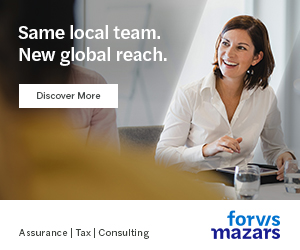8 takeaways from our Power Breakfast on corporate responsibility

BUSINESS RECORD STAFF May 13, 2022 | 2:40 pm
7 min read time
1,563 wordsAll Latest News, Arts and Culture, Retail and Business, VideoWatch the event on Facebook Live | View photos from the event
From inclusion to sustainability to political influence, businesses today are expected to focus on much more than profits. Our corporate social responsibility discussion focused on trends that are driving many consumers, recruits and employees to look at how conscientious a business is.
At yesterday’s Power Breakfast we talked about what goes into the decision to speak up or get involved with issues that may not directly be tied to an organization’s line of work. Here’s what the speakers told us they think the business community should be aware of.
Panelists included:
Scott Johnson – Thome professor in business and interim associate dean for research, Iowa State University Ivy College of Business.
Tanner Krause – CEO, Kum & Go.
Jo Christine Miles – director, Principal Foundation and community relations.
Eileen Wixted – principal, Wixted and Co.
Focus on the common good and not good vs. evil
Johnson started the discussion talking about how the ability to talk about the common good has been lost. “We’ve devolved into talking about who’s good and who’s evil, and that’s a different conversation than what the common good is,” he said. Johnson said most people believe they don’t think in those terms. However, he challenged that assumption. “When we start making attributions about what the other [person’s] intent or character are … and when we start having this feeling like ‘I know what’s really going on; the other side doesn’t really know what’s going on’ – both of those things start to get us into this conversation of who’s good and who’s evil.”
– Kathy A. Bolten
Keep several stakeholders in mind when making a decision
Regardless of the size of a business or organization, Wixted recommends people use the “PEAR” model when making a decision. PEAR stands for people, environment, assets and reputation. “We always go through this filter of ‘Is it important to our people, is it important to our assets, is it important to the environment, and is important to our reputation,’” she said. Notice it’s PEAR and not REAP, she added, emphasizing the importance of a decision on people before reputation. The impact of a decision on the employees or associates within a company was a central theme throughout the conversation, and was rounded out with an audience question about where the opinions of investors and shareholders fall in the hierarchy of priority when making said decisions – do the investors come first or do the customers or associates come first? Johnson thinks that’s the wrong way to look at it. “I think the question is how to explain to your investors why your associates are important … and how to explain to your employees why the investors are important. The company doesn’t work without all of those, and they need to understand that all of those things have to be prioritized at different times.”
– Emily Kestel
If you’re not focusing on equity, what aren’t you addressing?
Renee Hardman, who this year is transitioning from her role as CEO of Big Brothers Big Sisters of Central Iowa to become the first chief diversity, equity and inclusion officer for Broadlawns Medical Center as well as its vice president of human resources, noted that many organizations are at different stages in addressing equity as one of the three elements of diversity, equity and inclusion. She asked the panelists: How does equity play out in the work they do and with their companies as social responsibility?
Miles said that Principal has created processes for monitoring DEI that have evolved over time. “As we know, having diversity doesn’t mean you have inclusion, and when you have inclusion, it doesn’t mean you have equitable outcomes,” she said. “So we have regular reviews with various [indicators] like pay differences. We’re monitoring hiring, we’re monitoring who’s making the hiring decisions or who’s able to weigh in on those decisions. And as you change those things internally, you have the proof points, so if you are ever asked to speak on those issues we can say: ‘Look, we’ve done this ourselves; we aren’t just pointing a finger at the outside world.’”
Krause, who is a tri-chair of the DSM USA 4 Equity Collective with Hardman and Marta Codina, said organizations that aren’t addressing equity should ask themselves: What are they tolerating? “I would say, think about the opposite of equity — inequity. [What does it say] if you’re part of an organization and you’re not addressing equity and you’re living with the organization paying someone different because that person is a female, because that person is not white or because that person didn’t go to college, and not because that person is less of a performer?”
DSM USA 4 Equity Collective, launched in January, has brought together a range of community stakeholders to develop tools, plans and goals for building more equitable practices across businesses and communities. Krause said the collective has surveyed nearly 200 Central Iowa organizations to collect data on their equity practices and outcomes, and will be publishing a data report in the third quarter.
— Joe Gardyasz
Ask unexpected questions to gain insight
Asking unexpected questions is a good way to better understand what issues are truly most important to nonprofit organizations that are seeking support, Principal’s Miles said.
One of the questions she poses: “What do you think it would take for you to go out of business?” Their answer to the question often provides a deeper understanding of how the nonprofit frames the issue, such as who they consider their allies or detractors on the issue. Another unexpected question she asks: “Who would you most want to partner with or merge with?”
— Joe Gardyasz
Untethered gifts to nonprofit groups lift restrictions
Krause received applause for his response to a question from the audience about how to encourage more companies to eliminate restrictions on the use of grant money. Both the Principal Foundation and Kum & Go allow grants to be used to pay for operating and staffing costs. While Krause didn’t provide specific ways to encourage more businesses to provide grants that are unrestricted, he did explain why Kum & Go doesn’t restrict how grants can be used. “Look at the cost increases it’s taken to run any organization in the last two years – materials, supplies, labor. All of these things have increased by double digits in the span of months. Nonprofits don’t have a product that they can raise prices on to offset those costs. [Businesses] have to be the ones that offset those costs. We have to give at a level that helps [nonprofits] continue to provide services.”
— Kathy A. Bolten
Listening is important
One audience member shared an observation about listening leading to judgment more than to understanding of another person’s perspective. Krause said that conducting many things virtually during the pandemic has contributed to the “division and polarization” and a loss of “compassion and empathy” that comes from being physically with people. He encouraged working together on topics where there is agreement. “We may not always agree on everything, and that’s OK. I don’t agree on everything with my wife, my life partner, with my children, with my parents, with anybody. … Find areas where there is common good and align on what we can accomplish together because we’re stronger together.
Johnson shared an anecdote about being open to discussion even when you think the other person is wrong. When Iowa State University lifted its mask requirement, he said, some professors didn’t understand why students weren’t wearing them in the classroom. But after asking students their reasoning, “it really changed the dialogue and changed the assumptions that we had about what was really going on in the classroom.” He said, “It does require going in and asking a question and actually being able to go into that saying, I’m willing to be convinced that this person is not wrong. I’m actually going to listen to their explanation to try to understand how they’re thinking, and it can be really powerful when you do that.”
—Sarah Bogaards
Focus on your ‘internal constituents’ first
Wixted said there has been a “seismic shift” in the last 10 years from companies focusing more on their external communications to recognizing the importance in communicating with employees first. Even though leaders feel like they’re constantly communicating with employees, she said a “frequent and layered approach” is needed. “For a number of our clients, employees are going to get any news release first, before it is sent out. Whatever decisions we’re going to make, we’re going to tell you first and then we’re going to send it out. … First and foremost, your internal constituents, I believe, are your most important because then you you can convert those individuals, and that sounds really harsh, but frequently employees then want to become advocates for where they work and what they do.”
—Sarah Bogaards
Be comfortable with the uncomfortable
Wixted gave an example of two companies she worked with on communications plans in the wake of George Floyd’s murder. One chose not to make a statement and the other did make a statement. Both were criticized. She said it’s important for business leaders to be comfortable with disagreement as long as what they are choosing to do best aligns with their values.
—Emily Barske











